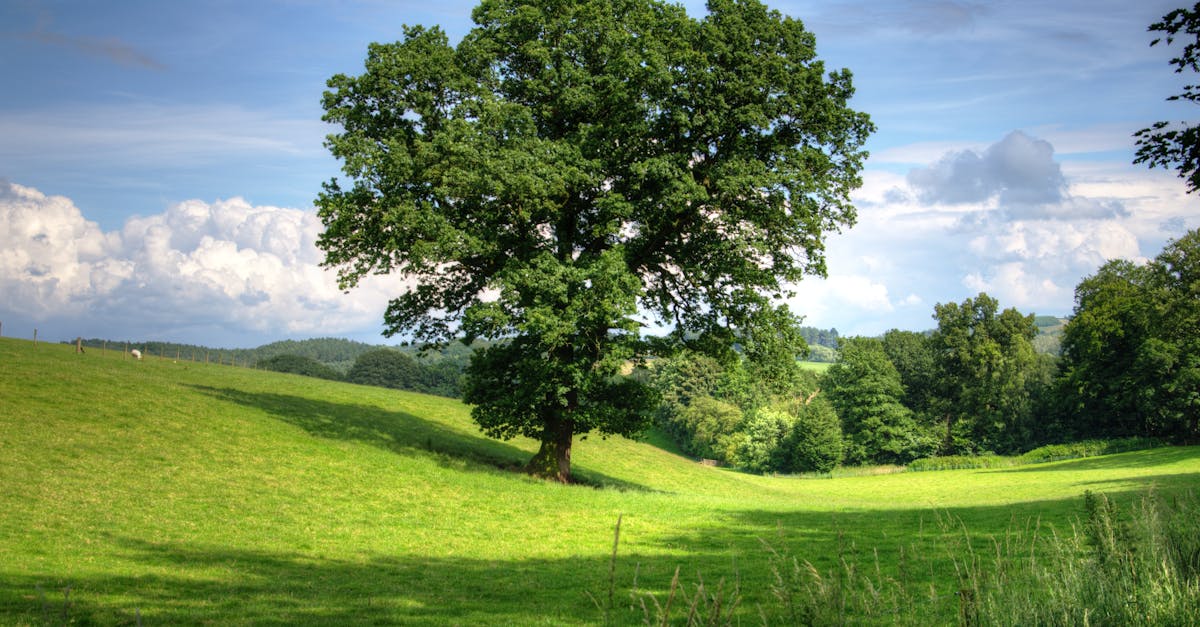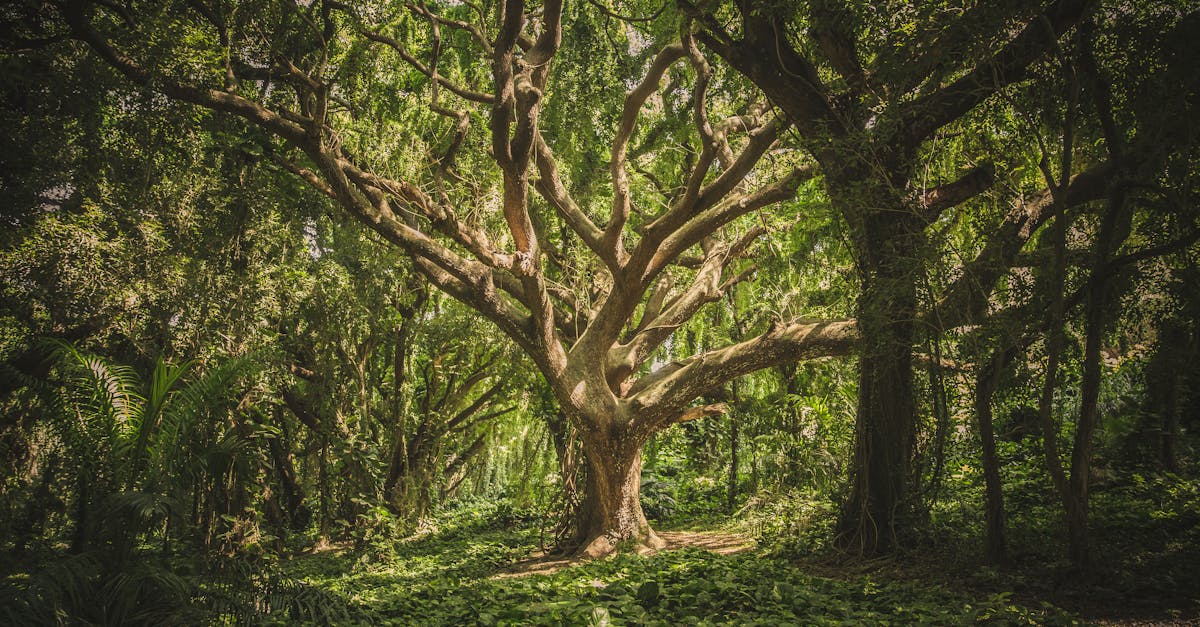
Watering and Fertilizing
Watering and fertilizing are crucial steps in ensuring the successful growth of a newly planted tree. When it comes to watering, the key is to strike a balance. Over-watering can lead to root rot, while under-watering can cause stress to the tree. Establishing a watering schedule based on the tree species, climate, and soil conditions is essential. Keep in mind that trees need more water during their initial establishment period. Checking the moisture level of the soil regularly can help determine if watering is necessary.
Fertilizing is another aspect to consider when thinking about tree planting. Choosing the right type of fertilizer and applying it at the appropriate time can greatly benefit the tree's growth. Fertilizing should be done when the tree is actively growing, usually in the spring. Be cautious not to over-fertilize, as this can harm the tree. Remember, the right balance of watering and fertilizing is key to promoting healthy growth in your tree. For those looking into tree planting near me, understanding these practices can lead to a flourishing tree.
Establish a Watering Schedule and Fertilize as Needed
Establishing a watering schedule is crucial in ensuring the growth and development of a newly planted tree. Adequate water supply is essential, especially during the initial stages of growth. It is recommended to water the tree deeply but infrequently to encourage deep root growth. Monitoring the soil moisture level regularly will help in determining the appropriate watering frequency. Additionally, fertilizing the tree as needed will provide essential nutrients for optimal growth and health. Consider using a slow-release fertilizer to gradually feed the tree over time, promoting steady and continuous growth. Seek advice from local nurseries or online resources to determine the most suitable fertilizer for the specific tree species. Tree Planting near me can provide valuable insights into the proper watering and fertilizing practices to nurture a thriving tree.
When establishing a watering schedule, factors such as soil type, weather conditions, and tree species should be considered. Implementing a consistent watering routine based on these factors will help prevent under or over-watering, which can be detrimental to the tree's development. Applying mulch around the base of the tree can help retain moisture and reduce water evaporation, especially during hot and dry periods. Fertilizing as needed, based on the tree's growth rate and appearance, will support its overall health and vitality. Remember to adjust the fertilization schedule as the tree matures to meet its changing nutrient requirements. By following a well-structured watering and fertilizing regimen, individuals can contribute to the successful establishment and long-term well-being of their planted trees.
Staking (If Necessary)
Staking a newly planted tree is sometimes necessary to provide support and stability while its roots establish themselves in the soil. When deciding whether to stake a tree, consider factors such as the tree's size, the wind exposure in your area, and the tree's root system. Staking is typically recommended for larger trees or those planted in windy locations to prevent them from swaying excessively, which can damage the roots. When you search for "Tree Planting near me," consider seeking guidance from local arborists or gardening centers to determine if staking is necessary for the specific tree species you are planting.
If staking is recommended, ensure that the stakes are tall enough to support the tree but not too tall to restrict its natural movement. Place the stakes a few inches away from the tree's trunk and secure them firmly in the ground. Use soft ties to attach them to the tree, making sure not to tie them too tightly to allow for some movement. Regularly check the stakes' tension and adjust them as needed to accommodate the tree's growth. Proper staking will help the tree establish a strong and stable root system, ensuring its health and longevity.
Properly Install and Adjust Stakes
For proper installation of stakes when planting a tree, it is crucial to ensure that the stakes are placed far enough away from the tree to allow room for growth without causing damage to the roots. Drive the stakes at least 18-24 inches into the ground to provide adequate support for young trees without risking them leaning over due to wind or other external factors. Adjust the ties connecting the tree to the stakes to allow for some movement, which is essential for the tree to develop a strong trunk.
Adjusting stakes as the tree grows is essential to prevent them from becoming too tight on the tree trunk, which could restrict growth or cause damage. Regularly check the ties and adjust them to maintain a secure but loose connection between the tree and stakes. Monitoring the growth and development of the tree will help in determining when it is safe to remove the stakes completely, promoting natural stability and strength in the tree. If unsure about the proper staking method, consider consulting a local arborist or searching for "Tree Planting near me" for professional assistance.
Pruning and Maintenance
Pruning and maintenance are crucial aspects of ensuring the health and growth of your newly planted tree. Regularly inspecting the tree for any broken, diseased, or dead branches is essential in maintaining its overall well-being. Removing these problematic branches not only enhances the tree's appearance but also promotes new growth and prevents potential diseases. Monitoring the tree's health after planting is integral to its long-term survival, so always prioritize consistent care and attention.
Tree Planting near me should involve periodic trimming to shape the tree and stimulate healthy growth. Trimming any crossed branches or excessive growth helps maintain the tree's structural integrity and prevents overcrowding that could hinder its development. Additionally, inspecting the tree for pests or diseases at regular intervals is necessary to address any issues promptly and uphold its vitality. Remember, proper pruning and maintenance practices contribute significantly to the longevity and beauty of your newly planted tree.
Trim as Needed and Monitor Tree Health
Trimming a tree is essential for its growth and overall health. As the tree matures, it is crucial to remove any dead or diseased branches to prevent the spread of infection and promote new growth. Regularly inspect your tree for any signs of damage or pests. By catching these issues early on, you can address them promptly and ensure the tree's vitality.
Monitoring the health of your tree is a continuous process. Keep an eye on the leaves, branches, and overall appearance of the tree. Changes in leaf color, wilting, or stunted growth can be indicators of underlying problems. Consulting with a professional arborist or tree care service can provide valuable insights and guidance on Tree Planting near me. Remember that proactive care and regular monitoring are key to maintaining a healthy and thriving tree in your landscape.
FAQS
Why is watering and fertilizing important when planting a tree?
Watering and fertilizing are crucial for the initial growth and establishment of the tree. Water helps the roots establish in the soil, while fertilizer provides essential nutrients for healthy growth.
How do I establish a watering schedule for a newly planted tree?
To establish a watering schedule, water the tree deeply immediately after planting and monitor the soil moisture levels regularly. Adjust the frequency based on weather conditions and the tree's specific needs.
When is staking necessary when planting a tree?
Staking is necessary when planting a tree if it has a weak root system or if it is in a windy location. Staking provides support to help the tree grow upright and establish itself properly.
How do I properly install and adjust stakes for a newly planted tree?
When staking a tree, ensure the stakes are placed on opposite sides of the tree and are not tied too tightly. Adjust the stakes as the tree grows to prevent any damage to the trunk.
Why is pruning and maintenance important for a newly planted tree?
Pruning and maintenance help shape the tree's growth, remove any damaged or diseased branches, and promote overall tree health. Regular pruning and maintenance can also prevent future issues and ensure the tree's longevity.


